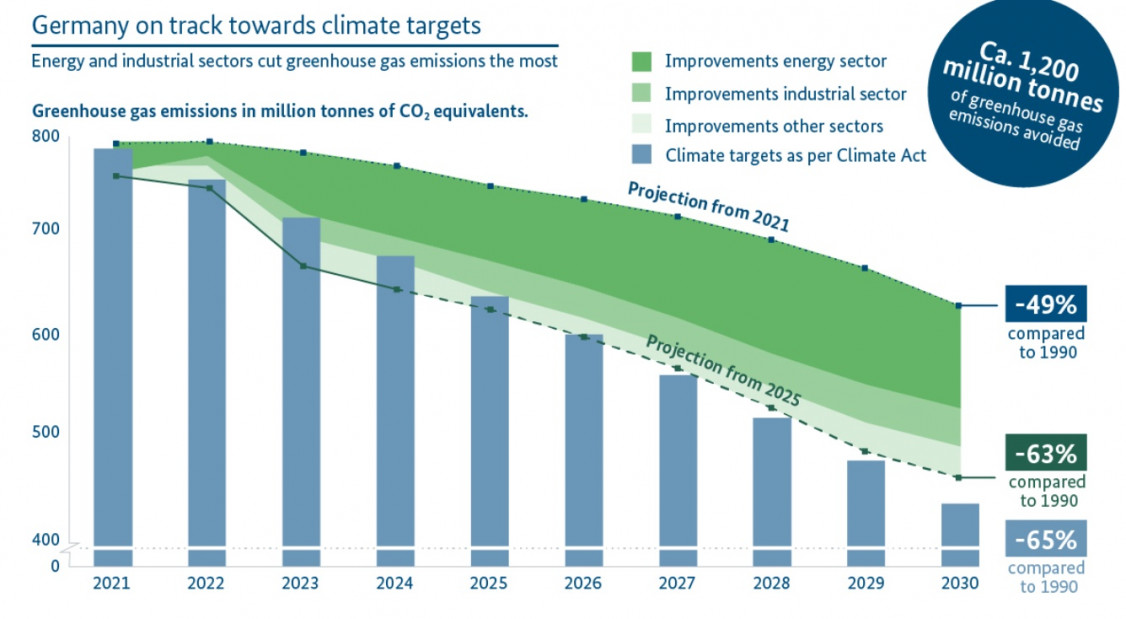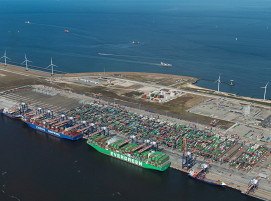
Are the climate targets within reach based on the country’s current climate policy? This is the question the German Environment Agency wanted to answer in its 2025 greenhouse gas projection, which was recently published. The study helps identify gaps early, so that they can be closed in time.
The publication entitled “summary of findings” gives an overview of the greenhouse gas emissions to be expected as of 2025, complete with information about the short, medium and long-term drivers of the development. The focus is on trends and climate targets up to 2030, but the projection also includes an outlook on the development post 2030 and with regard to the climate targets for 2040 and 2045. Developments in individual sectors are analysed and sketched out on the basis of assumptions on economic trends, infrastructure development, electricity prices and funding terms.
Overall, the 2025 projection paints a positive picture of the effectiveness of climate policy. A continued high need for political action still exists with regard to compliance with the targets under the European Effort Sharing Regulation (particularly in the buildings and transport sectors and in parts of the industrial sector), the long-term goal of climate neutrality by 2045, and the LULUCF sector.

Council of Experts on Climate Change will review findings by 15 May 2025
According to the projection, the target for the 2021 through 2030 period set out in the Federal Climate Action Act will be met overall, with some areas even slightly above target. Of the statutory carbon budget for 2021 through 2030 (6.2 billion t), some 80 million t are not being used. The Council of Experts on Climate Change reviews this finding. In its audit, it will decide whether and when the new Federal Government will have to table a new climate action programme.
In 2021, the German Environment Agency still forecast in its projection that total emissions for the period from 2021 to 2030 would exceed the climate target by some 1,200 million t. The energy sector accounts for almost 60 % of all visible progress made since then, followed by the industrial sector, which accounts for some 20 % of the calculated emission reduction.
These improvements have been achieved through climate-policy measures such as European emissions trading, a strong expansion of renewables, and a swift phase-out of energy generation from coal. The short-term economic situation has also been factored into the projection. It makes a limited contribution to the reduction. Sensitivity calculations show that the climate targets can be achieved even when the economy picks up pace again.
Additional need for action in the buildings and transport sectors
While emissions in the transport and buildings sectors are falling more quickly than before, they still remain above the levels set out in the Federal Climate Action Act. Emissions from agriculture and the waste sector have been steadily falling since the beginning of the decade. These are areas where the statutory climate targets are being met.
The binding greenhouse gas emissions reduction targets for the period from 2021 through 2030 applying under the European Effort Sharing Regulation are being missed by Germany more clearly than anticipated, especially in the buildings and transport sectors. The anticipated gap according to the new projection is 226 million t of CO2 equivalent. This is 100 million t more than in the projection from the preceding year. The main reason for this increase is higher emissions from the buildings sector.
Climate change could continue to damage forests in their capacity as natural carbon sinks
The climate target for the LULUCF sector is also missed more clearly than previously expected (by approx. 60 million t more). Here, the main reason can be found in damages to forests caused as a result of drought. The projection is based on the assumption that climate change will result in more extreme weather events causing major damage. This will continue to harm the forests that have already lost their important function as natural carbon sinks in the LULUCF sector.
Projected emissions in 2030 are 63 % below the level of 1990. This means that the climate target for 2030, i. e. a reduction by 65 %, remains within reach. The climate targets for 2031 through 2040 and the target of climate neutrality by 2045, however, will not be reached on the basis of the measures that are currently in place. Based on the current measures, emissions in 2045 would be 84 % lower than the level of 1990.
(Source: Ministery for Economic Affairs and Climate Action)






